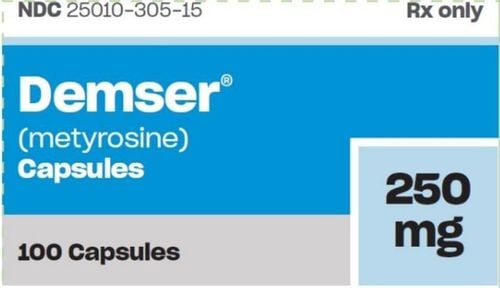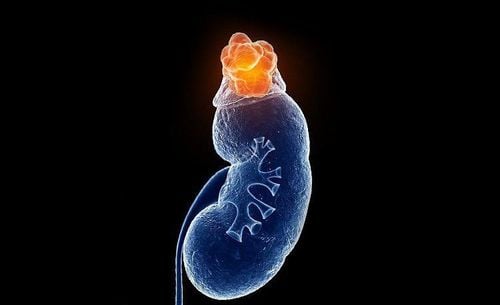This is an automatically translated article.
Pheochromocytomas are rare neuroendocrine tumors of the adrenal glands. They often cause a sudden rise in blood pressure and many dangerous complications if not controlled in time.1. What is Pheochromocytoma?
Pheochromocytoma or Pheochromocytoma is a disease that occurs when there is an overproduction of adrenal medullary cells, which is very rare and mostly benign. The adrenal gland of the affected person will produce more catecholamine hormones (adrenalin, noradrenalin, ...) than usual and cause symptoms such as heart palpitations, headache and sweating.
Usually, if the pheochromocytoma is located outside the adrenal gland, it will weigh 20-40g with a size less than 5cm. Sympathetic ganglion systems in the intestine, superior mesentery, and lower mesentery are common sites for extra-adrenal medulloblastoma. Pheochromocytomas in the thoracic sympathetic ganglia account for about 10%, approximately 3% in the cervical sympathetic ganglia, and 1% in the bladder. If Pheochromocytoma is in the adrenal gland, the malignancy rate is 11%. The rate of malignancy will be up to 30% if it is an extra-adrenal pheochromocytoma.
2. Causes of Pheochromocytoma
Currently, the specific cause of Pheochromocytoma is not known. Accordingly, studies have shown that 25% of adrenal medullomas are familial and have been shown to be caused by genetic mutations. Adrenal myeloma is also thought to be a manifestation of multiple endocrine neoplasia types IIA and IIB syndromes caused by mutations in the RET gene. In addition, studies have also found an association between adrenal myeloma and neurofibromatosis, a relatively common disease in clinical practice.

Nguyên nhân gây u tủy thượng thận có thể do đột biến gen
3. Subjects at risk for Pheochromocytoma
People with the following pathological disorders have a higher risk of developing adrenal myeloma:
Von Hippel-Lindau disease: The patient's body will gradually appear tumors in many different locations, usually in the central nervous system, pancreas and kidneys, endocrine glands; Hereditary parasympathetic ganglionoma: Tumors that produce in the adrenal medulla and parasympathetic ganglia; Neurofibromatosis type 1: The patient will have growths in the optic nerve, tumors on the skin and hyperpigmented spots on the skin; Polyendocrine neoplasms: This is a disease that produces endocrine tumors in many places on the patient's body. Common places where tumors develop include the thyroid gland, parathyroid glands, tongue, and digestive tract.
4.Symptoms of Pheochromocytoma
Adrenal myeloma often becomes the reason leading to episodes of paroxysmal hypertension with manifestations such as:
The patient has severe headaches; When measuring blood pressure very high; Have symptoms of palpitations ; The patient's body sweats a lot; Pale face, feeling of fear; Feeling dizzy when standing; Poor eating leads to weight loss; Mood swings and often get tired easily. The frequency of the pain will increase over time, initially occurring as a small weekly or monthly basis, later becoming more and more dense and severe. Exacerbations often come on very suddenly, lasting from a few minutes to hours, sometimes longer. In addition, there may also be an exacerbation when the patient changes position, or bends over, presses the abdomen, twists the back, takes deep breaths,...
Besides, if the symptoms of high blood pressure in Untreated patients can lead to vision loss, kidney disease, heart disease and stroke. On the other hand, symptoms such as chest pain or abdominal pain above the navel are also common during the attack, which may be accompanied by vomiting, nausea, and constipation.
MORE: Adrenal myeloma stimulation and inhibition test diagnoses adrenal myeloma

Sụt cân không lý do là một triệu chứng của u tủy thượng thận
5. Diagnosis of Pheochromocytoma
To diagnose Pheochromocytoma , the first step, the specialist will ask about the medical history and conduct a clinical examination of symptoms. Next, to measure the level of hormones secreted by the tumor, the patient will be ordered by a doctor to have a blood test and a urine test in 24 hours. Before the test, you should not drink alcohol, coffee or take certain antidepressants or amphetamines, benzodiazepines or lithium as this can lead to errors in the test results.
To make an accurate diagnosis, the doctor will combine with imaging methods, including magnetic resonance imaging (MRI), CT scan and some other techniques to find and identify tumors. For tumors outside of the adrenal gland, additional systemic imaging and special medical tests may be needed.
6. Treatment of Pheochromocytoma
The main treatment for adrenal myeloma is surgical removal of the tumor. 90% of cases can be cured with this treatment. While waiting for surgery, your doctor may prescribe medications to lower your blood pressure. This treatment can cause some complications for the patient including bleeding and infection, but this is very rare.
For cases with malignant and metastatic adrenal myeloma, surgical methods are no longer effective. At this time, to control the disease, the patient will be treated with chemotherapy and radiotherapy techniques.
Like other endocrine diseases, in order to prevent pheochromocytoma, it is important for each person to build a healthy diet and a scientific lifestyle. Besides, if in the family there are close relatives with endocrine tumors, the members should be screened by paraclinical tests.
Vinmec International General Hospital is the address for medical examination, diagnosis and treatment trusted by many customers. At Vinmec, there is a team of highly qualified, experienced medical professionals with a dedicated and professional attitude. With the full support of a system of modern medical equipment, Vinmec always ensures to provide each customer with comprehensive and effective healthcare services.
Please dial HOTLINE for more information or register for an appointment HERE. Download MyVinmec app to make appointments faster and to manage your bookings easily.













